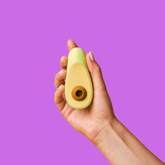Practical ways for partners to achieve equal pleasure and close the orgasm gap

You and your partner can work together towards closing the orgasm gap. It is important to communicate openly and remain curious. Taking simple steps can lead to equal pleasure for both of you. Did you know that 95% of heterosexual men frequently orgasm during sex, while only 65% of heterosexual women do? This closing orgasm gap is not merely about statistics; it affects how couples feel connected and valued. When you both share pleasure, you foster greater happiness and trust. Additionally, you challenge outdated cultural notions. Closing the orgasm gap means you both enjoy intimacy and feel truly heard. Every couple deserves that opportunity.
Key Takeaways
Talking openly and honestly about pleasure helps partners feel closer. It also helps them understand each other's needs better. Learning about the clitoris is important. Using techniques like clitoral stimulation can help both people feel good. Using sex toys together can make things more fun and exciting. It can help both partners enjoy sex more. Practising mindfulness during intimacy helps partners stay focused. It helps them enjoy sex without stress or distractions. Respecting boundaries is important. Working as a team builds trust. It makes the journey to equal pleasure better for both.
Understanding the Orgasm Gap

What Is the Orgasm Gap?
You may have heard about the orgasm gap. But what does it mean? The orgasm gap is when men and women do not orgasm as often as each other during sex. This happens most in heterosexual couples. The gap started a long time ago because of history and culture. Look at this table to see how it began and why it still matters now:
Aspect |
Evidence Summary |
|---|---|
Definition of Orgasm Gap |
The orgasm gap means men and women do not have orgasms equally during sex. Women say they orgasm less often than men, no matter their background. |
Historical Roots |
In 1953, the Kinsey Report showed men and women had different orgasm rates. This was the first big study to notice the gap. By 1990, people started calling it the "orgasm gap." |
Cultural and Scientific Roots |
The gap comes from old science and culture that focused on men’s pleasure. People used to think only the vaginal canal mattered, not the clitoris. This led to many not understanding female pleasure. |
Socialisation Factors |
Women are often less likely to ask for what they want in bed. They may not talk about their needs. Some women fake orgasms or care more about their partner’s pleasure. This keeps the gap going. |
The pleasure gap is not just about bodies. It is also about how people talk about sex and women’s pleasure.

Why Closing the Orgasm Gap Matters
Closing the orgasm gap is not just about having orgasms. When both people feel happy, the relationship gets stronger. Studies show women who orgasm more feel happier and more sure in their relationships. Couples who care about each other’s pleasure talk better and trust each other more. Men in relationships can learn how to please their partners. This helps close the gap. Making space for female orgasm changes old ideas about gender. It helps make things fairer for everyone. This means more pleasure for both people.
Myths About Orgasm
There are many myths about sex and orgasm that keep the gap wide. Here are some common ones:
Many think sex is only about penetration. This puts male orgasm first and ignores what most women need.
Some people say clitoral stimulation is just "foreplay" or not important. But most women need it to orgasm.
Some believe women should orgasm from vaginal sex alone. Science shows this is not common.
Some think sex ends when the man orgasms. This leaves out women’s pleasure and can make them feel forgotten.
Some cultures shame women for wanting pleasure or using sex toys.
Tip: Talk openly about what feels good. Try new things together to break these myths.
You do not have to follow old ideas. You and your partner can find your own way to pleasure and happiness.
Communication for Closing the Orgasm Gap

Talking About Pleasure
You might feel nervous talking about sexual pleasure, but open and honest dialogue is the key to closing the orgasm gap. When you and your partner talk about what you enjoy, you both feel more connected. Try setting aside time just to chat about your likes and dislikes. You can use a "Yes, No, Maybe" checklist to make things easier. This helps you both share your desires and boundaries without feeling judged.
Tip: Start with a positive. Say something you love about your sex life before sharing something new you want to try.
Some couples find it helpful to use humour or even write letters to each other. You could also share a story or a piece of erotica that shows what you like. Remember, talking about sex outside the bedroom can make things less stressful.
Giving Feedback
Giving and receiving feedback during sex helps you both learn and grow together. You might worry about hurting your partner’s feelings, but feedback is about finding more pleasure, not about blame. Use "I" statements, like "I love it when you do this," or "I’d like to try something different." This keeps things kind and clear.
Research shows that couples who give feedback feel closer and more satisfied. Feedback can be verbal, like a compliment, or nonverbal, like guiding your partner’s hand. When you both listen and respond, you build trust and reduce anxiety. Remember, feedback is a two-way street. Ask your partner what they enjoy, too.
Setting Boundaries
Setting boundaries is a form of self-care and respect. You have the right to say no to anything that makes you uncomfortable. Talk openly about your limits and listen to your partner’s as well. Boundaries can change over time, so check in with each other often.
Discuss what feels good and what doesn’t.
Agree that saying "no" is always okay.
Show appreciation when your partner respects your boundaries.
Boundaries help you both feel safe and valued. They stop frustration and help you enjoy sex without pressure. When you respect each other’s boundaries, you build trust and make your relationship stronger.
Practical Ways to Close the Orgasm Gap
Exploring Techniques
To have better sex, you should learn about the clitoris. Many people think it is just a small bump, but it is much bigger. It goes under the pubic bone and around the vaginal opening. The clitoris has many nerves and is the main way most women orgasm. Less than 10% of women orgasm from penetration alone, so clitoral stimulation is very important.
Here are some facts about the clitoris and pleasure:
The clitoris is the main organ for female orgasm.
Clitoral stimulation should come first, not last.
Talking and learning about the clitoris helps both partners.
Exploring your own body and sharing helps you orgasm more.
Touching other areas, like the mons, inner thighs, and labia, can feel good too.
Sex toys for the clitoris, like vibrators, can help you feel new things.
Many people do not know enough about the clitoris because of myths, so learning together matters.
Professor Helen O’Connell’s research changed what we know about the clitoris. She found it is not just a nub, but a big organ with lots of nerves. The G-spot is likely part of the clitoris felt through the vaginal wall. This means learning about the clitoris and how to touch it is key to closing the orgasm gap.
You can try different ways to make sex feel better. Here is a table of some popular techniques:
Technique |
Description |
How Common? |
|---|---|---|
Pairing |
Using your hand or a toy on the clitoris during penetration |
|
Angling |
Changing the angle of penetration to find what feels best |
Very common |
Rocking |
Moving your hips in a rocking motion during penetration |
Very common |
Shallowing |
Using shallow thrusts instead of deep ones |
Very common |
Pairing means touching the clitoris while having sex. This is one of the best ways to help women orgasm more often. Many women also find that doing what they do alone during sex with a partner helps them have stronger orgasms.
Tip: Talk about what feels good and try these techniques together. You might find something new that works for both of you.
Using Sex Toys
Sex toys are not just for using alone. Up to 53% of women use vibrators, and these toys can make sex with a partner more fun. Vibrators are very good at touching the clitoris, which helps most women orgasm. Using a vibrator during sex or alone is a good way to reach orgasm, and many women say it helps them have more than one orgasm.
Using vibrators often can help you want sex more and enjoy it more. They also help with wetness and make sex feel better. If you or your partner feel tired, a vibrator can make orgasm easier.
Here are some good things about using sex toys together:
Toys add excitement and stop sex from feeling boring.
Men often find toys make foreplay longer and more fun.
Couples’ toys are made to help both people feel good.
Bringing sex toys into your relationship can feel strange at first, but it usually helps you talk more and feel closer. You both learn more about each other’s bodies and what you like. This builds trust and makes sex more fun. Remember, toys are for helping both of you enjoy sex more.
Note: Some people worry that toys will take their partner’s place or make them feel less wanted. But toys are for sharing and learning, not for replacing anyone.
Mindfulness in Intimacy
Mindfulness means paying attention to what is happening right now. When you use mindfulness during sex, you focus on your body and feelings, not on worries. Studies show women who use mindfulness during sex have better and more regular orgasms.
You can practise mindfulness with easy steps:
Try deep breathing before and during sex.
Focus on how touch, warmth, and movement feel.
Notice your partner’s breath and heartbeat.
Let go of other thoughts and stay in the moment.
Dr. Laurie Mintz says yoga, breathing, and mindful activities can help you feel more present in your body. When you are mindful, you can talk better and show your partner what feels good. This makes it easier to enjoy sex and helps close the orgasm gap.
Tip: Practise mindfulness outside the bedroom too. The more you practise, the easier it is to enjoy sex fully.
Playful Connection
Play is not just for kids. Couples who play together feel closer and more relaxed. Being playful makes it easier to try new things and talk about sex in a fun way. This helps you both feel safe and open to new pleasures.
Turn-taking is a good way to build trust. Instead of both partners trying to please each other at once, focus on one person at a time. This takes away pressure and lets each person enjoy being the centre of attention. Here is how to try turn-taking:
Set aside time for intimacy.
Choose who will get pleasure first.
Focus only on the person receiving.
Switch roles when you are ready.
Mutual exploration is important too. You can try sensate focus, which means touching each other just to enjoy the feeling. This lowers stress and helps you both learn what feels good. Mutual masturbation is another way to show your partner what you like, using your hands, faces, and sounds.
Tip: Remember, closing the orgasm gap is something you do together. Both partners should learn about cliteracy, talk openly, and support each other’s pleasure.
When you work as a team, you build a stronger bond and enjoy better sex together.
Overcoming Barriers to Orgasm
Addressing Psychological Blocks
Sometimes your thoughts can stop you from feeling pleasure. You might feel anxious or stressed, which makes orgasm harder. Problems in your relationship or feeling sad can also have an effect. Past experiences might make you feel worried too. Many women feel shy or embarrassed about asking for help. These feelings are very common. You are not the only one who feels this way.
-
Some common psychological barriers are:
Anxiety or stress
Feeling sad or low
Problems with your partner
Beliefs about sex from your culture or family
Bad experiences in the past
If you notice these problems, talk to your partner or someone you trust. Sex therapy or counselling can help you feel better and more confident. You can also find help online if you want to keep things private. Letting yourself enjoy sex is a big step to closing the orgasm gap.
Tip: Try mindfulness and relaxation to help you stay calm and enjoy intimacy.
Navigating Physical Challenges
Physical problems can also make orgasm difficult. Your body might need more time or a different kind of touch. Hormones, feeling tired, or pain can make things harder. You may find some positions or activities feel nicer than others.
Pelvic floor exercises, sex therapy, or couples counselling can help you. These focus on your body and your mind. If you have pain that does not go away, talk to a healthcare provider. Remember, everyone’s body is different. What works for one person might not work for you.
Challenging Societal Scripts
Society often tells us sex should happen in a certain way. Many people think penetration is the most important part. This idea does not help most women reach orgasm. You and your partner can change these old ideas together. Talk about what feels good and try new things, like clitoral stimulation.
Learning about pleasure helps close the orgasm gap. You can challenge old beliefs by exploring together and asking questions. Support each other’s needs. When you put pleasure first, both of you can have a better and fairer experience.
You and your partner can help close the orgasm gap if you work as a team and keep asking questions. Here are some ways to stay close:
Speak honestly about what you like and what you want.
Try out new things together and talk about what you find.
Ask each other often about what feels good and how you feel.
Be happy about every small win you have together.
Remember, every couple’s path is different. Keep learning new things, have fun, and enjoy getting closer to each other.
FAQ
What if I feel embarrassed talking about sex with my partner?
You might feel shy at first, but that’s normal. Try starting with a simple question or share something you enjoy. You can even use humour. The more you talk, the easier it gets.
Can everyone have an orgasm every time?
Not everyone has an orgasm every time. Bodies work differently. Some days you might find it easier, other days not. That’s okay. Focus on enjoying the moment together.
Are sex toys safe to use with a partner?
Yes, sex toys are safe if you use them as the instructions say. Clean them before and after use. Talk with your partner about what feels good. Sharing toys can make things more fun.
How do I know what feels good for me?
Explore your body on your own or with your partner. Try different touches and notice what you like. You can talk about it together. Learning about your pleasure helps you enjoy sex more.


